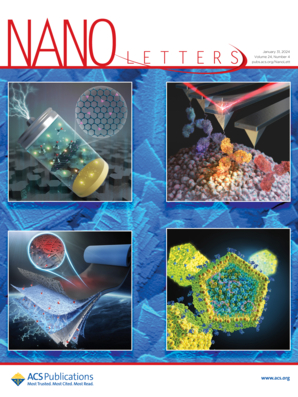A Family of Twisted Chiral Engineered Inorganic Nanoarchitectures
IF 9.6
1区 材料科学
Q1 CHEMISTRY, MULTIDISCIPLINARY
引用次数: 0
Abstract
Chiral inorganic materials possess unique asymmetric properties that could significantly impact various fields. However, their practical application has been hindered by challenges in creating structurally robust chiral materials. We report the synthesis of well-defined chiral-shaped hollow cobalt oxide nanostructures, extendable to a family of chalcogenides including sulfide, selenide, and telluride through topological transformations. Taking chiral cobalt oxide nanostructures as a representative material, we demonstrate precise control over their chiral architectures, enabling fine-tuning of parameters, such as twist degrees, handedness, and compositions. These chiral nanostructures exhibit high spin selectivity effects that influence the electron transfer processes in catalytic reactions. Leveraging this spin-selective behavior, the chiral cobalt oxide nanoarchitectures demonstrate enhanced electrocatalytic performance in the oxygen evolution reaction compared to their achiral counterparts. Our findings not only expand the library of chiral inorganic materials but also advance the application of chiral effects in fields such as catalysis, spintronics, and beyond.

扭曲手性无机纳米结构家族
手性无机材料具有独特的不对称特性,可对各个领域产生重大影响。然而,它们的实际应用一直受制于制造结构坚固的手性材料所面临的挑战。我们报告了定义明确的手性形空心氧化钴纳米结构的合成,通过拓扑变换可扩展到包括硫化物、硒化物和碲化物在内的一系列瑀。以手性氧化钴纳米结构为代表材料,我们展示了对其手性结构的精确控制,实现了对扭曲度、手性和成分等参数的微调。这些手性纳米结构表现出很高的自旋选择性效应,影响了催化反应中的电子转移过程。利用这种自旋选择性,手性氧化钴纳米结构在氧进化反应中的电催化性能比非手性结构更强。我们的发现不仅扩大了手性无机材料库,还推动了手性效应在催化、自旋电子学等领域的应用。
本文章由计算机程序翻译,如有差异,请以英文原文为准。
求助全文
约1分钟内获得全文
求助全文
来源期刊

Nano Letters
工程技术-材料科学:综合
CiteScore
16.80
自引率
2.80%
发文量
1182
审稿时长
1.4 months
期刊介绍:
Nano Letters serves as a dynamic platform for promptly disseminating original results in fundamental, applied, and emerging research across all facets of nanoscience and nanotechnology. A pivotal criterion for inclusion within Nano Letters is the convergence of at least two different areas or disciplines, ensuring a rich interdisciplinary scope. The journal is dedicated to fostering exploration in diverse areas, including:
- Experimental and theoretical findings on physical, chemical, and biological phenomena at the nanoscale
- Synthesis, characterization, and processing of organic, inorganic, polymer, and hybrid nanomaterials through physical, chemical, and biological methodologies
- Modeling and simulation of synthetic, assembly, and interaction processes
- Realization of integrated nanostructures and nano-engineered devices exhibiting advanced performance
- Applications of nanoscale materials in living and environmental systems
Nano Letters is committed to advancing and showcasing groundbreaking research that intersects various domains, fostering innovation and collaboration in the ever-evolving field of nanoscience and nanotechnology.
 求助内容:
求助内容: 应助结果提醒方式:
应助结果提醒方式:


